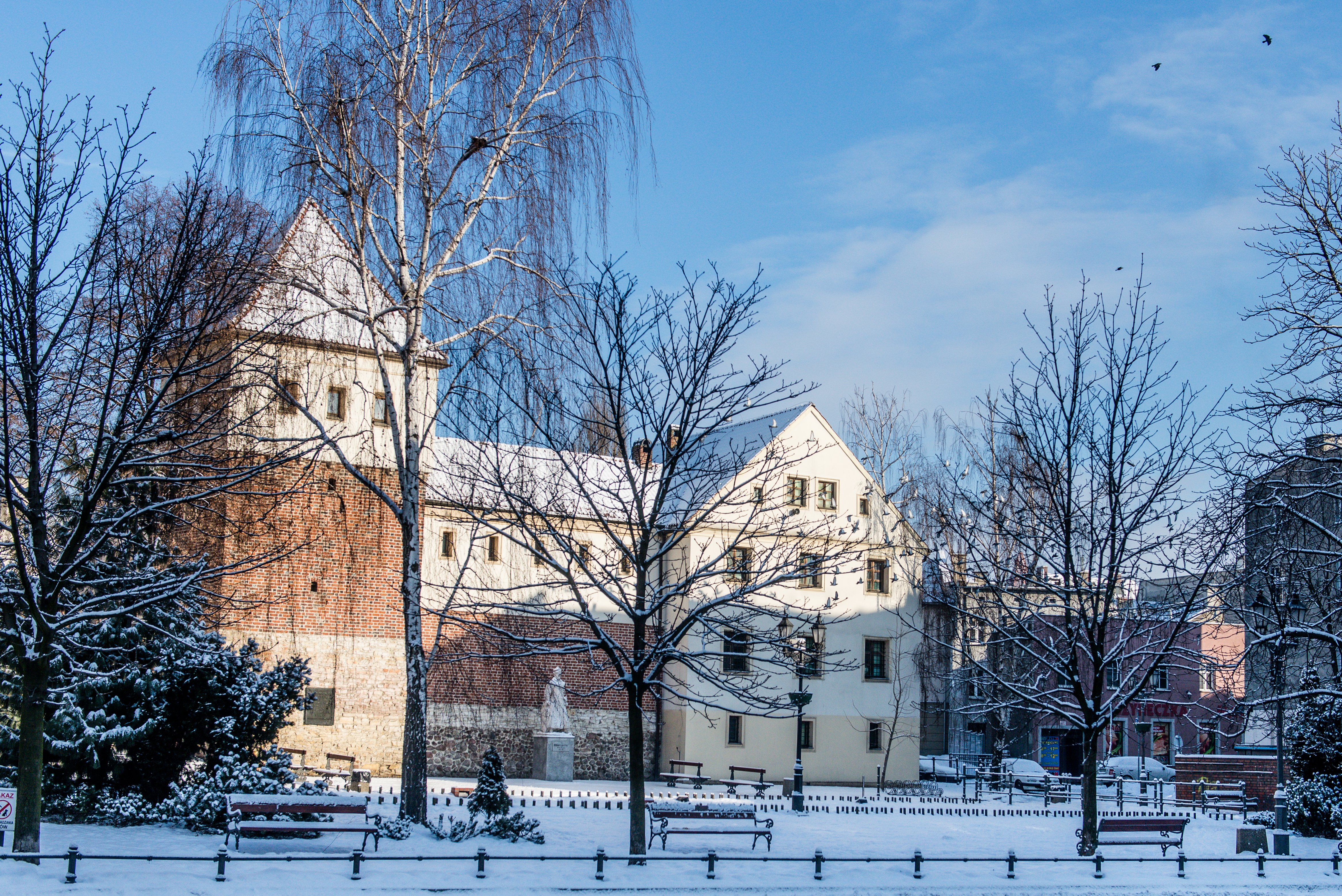
Middle Ages Gliwice were surrounded by a moat and by walls made of wood and soil, and maybe a ring of walls with towers, destroyed in 1430s. City walls which survived until today date back to the 2nd half of 15th and early 16th century. Their length was 1,125 m, height = 9 m and width = about 1 m. The walls were provided with a wooden, covered perch for guards on the inside. It also included shooting openings. The towers comprised a uniform structure with the wall, but also extended beyond the wall. They were opened towards the city and provided with battlements. The defensive line was reinforced with a 3–15 m wide moat, about 4 m deep, fed by Ostropka River, a tributary of Kłodnica River. On the outside, the moat was provided with an external wood and soil embankment with a wooden palisade. In addition to the Racibórz Gate, Bytom Gate also called the White Gate led to the city, it was located near the current ul. Basztowa. The four-level gate had a rectangular shape of approximately 6.6 × 7.7 m, with a very narrow gate passage, approximately 3 m wide.
The city defence system was partially dismantled in the 19th century. Górnych and Dolnych Wałów streets were created at the sites of the levelled soil embankment and the filled moat. The city walls are still visible at several locations, however, at pl. Rzeźniczy, in the walls of the Piast Castle, at ul. Dolnych Wałów and at ul. Grodowa. At pl. Rzeźniczy located near the All Saints Church there is a small archaeological reserve, presenting relics from the system of the city walls, including from one of the city gates – the Racibórz Gate, two bridgeheads of the bridge spanned over the moat, the arcade of which is recreated with a brick arch. The Racibórz Gate, also known as Black Gate, was built as a square with a 9 m side. It had 5 levels and was covered with a tent-style roof. It was also defended by a so called front flanking gate with two semi-circular towers, placed approximately 24 m before the wall line. They were probably initially connected with a bascule bridge replaced with a permanent bridge later on. The gate passage had a width of approximately 5 m.
Recently, during surface replacement in the Old Town, lines of former defensive structures were marked on the new pavement, including the outline of the White Gate walls at ul. Basztowa.
Dolnych and Górnych Wałów streets
Gliwice

